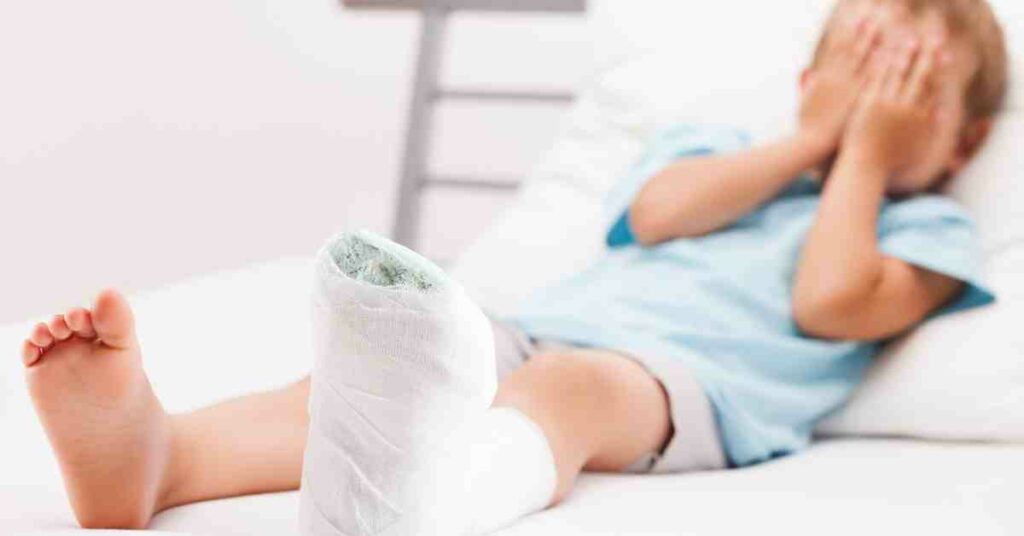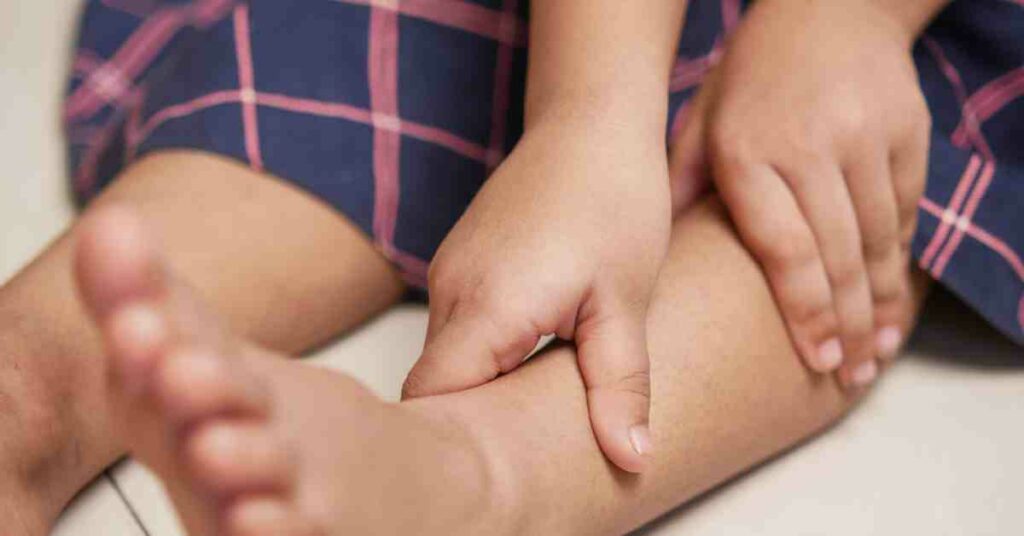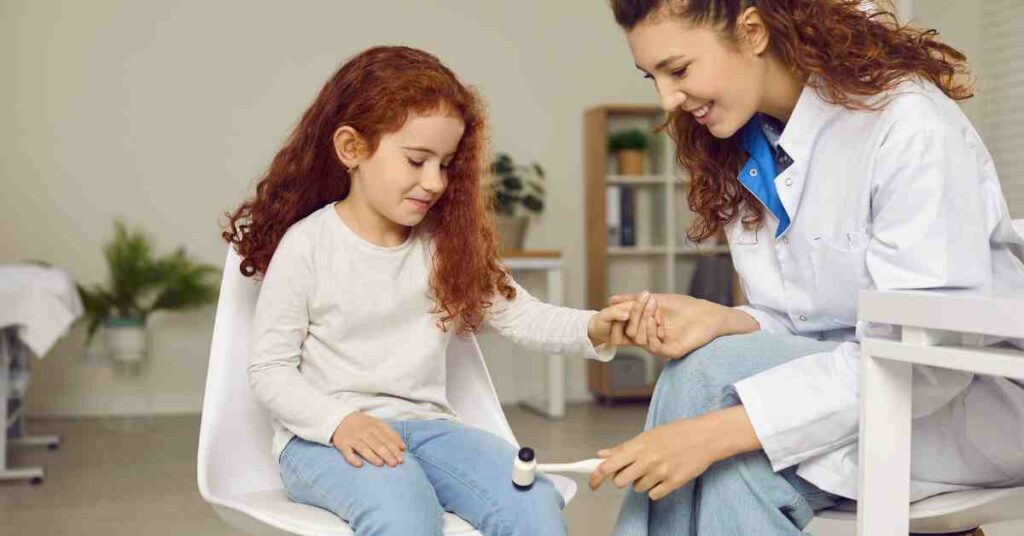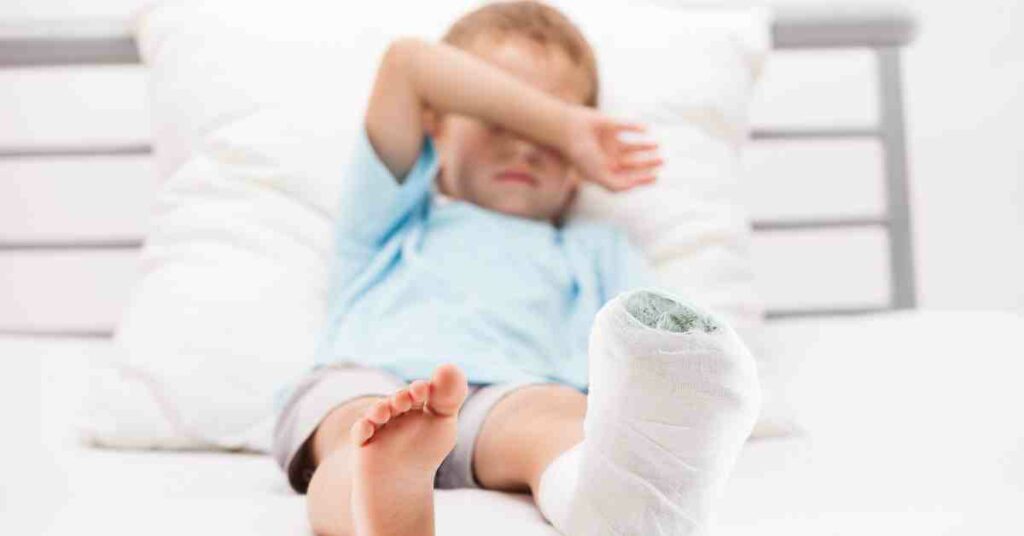Broken Bones in a Baby or Child: What Every Parent Needs to Know

Dealing with broken bones in a baby or child can be a daunting experience for any parent. While we all hope to avoid such situations, knowing how to recognise and respond to broken bones in a baby or child is crucial.
What Causes Broken Bones in a Baby or Child?
Broken bones in a baby or child can happen for various reasons, with common causes including falls, sports injuries, and accidents like car crashes or bike falls. Although babies and young children have more flexible bones, their developing skeletal systems make them more susceptible to fractures. Understanding the common causes of broken bones in a baby or child can help you take steps to prevent such injuries.
Signs and Symptoms of Broken Bones in a Baby or Child

Recognising broken bones in a baby or child can be challenging, especially if they are too young to communicate their pain. However, knowing the signs and symptoms is vital for getting the right medical care. Here are some indicators of broken bones in a baby or child:
Swelling or Bruising: One of the earliest signs of a broken bone is swelling or bruising around the injury. This can appear shortly after the incident.
Pain or Discomfort: If your child is crying excessively, appears inconsolable, or refuses to move, they may be in pain from a broken bone.
Inability to Move the Limb: A reluctance or inability to move the affected limb could be a sign of a fracture, especially if your child avoids using the limb altogether.
Deformity: In severe cases, the limb may appear deformed or out of place, indicating a potential break.
What to Do if You Suspect Broken Bones in a Baby or Child

If you suspect your baby or child has a broken bone, it’s important to act quickly and calmly. Here are the steps to take:
Keep Your Child Calm: Your priority should be to keep your child calm and still. This helps to prevent further injury and reduces their pain. Speak softly and offer comfort, avoiding any unnecessary movement of the injured area.
Immobilise the Area: Gently support the injured area without moving it. Use a soft cloth, towel, or a makeshift splint to keep the limb stable until you can get medical help. Do not attempt to straighten or reposition the limb, as this could worsen the injury.
Seek Medical Attention: Contact your doctor or take your child to the nearest emergency department as soon as possible. A healthcare professional will assess the injury, possibly using an X-ray to confirm the fracture. Prompt medical attention is essential for proper diagnosis and treatment.
Follow Medical Advice: Treatment for a broken bone may involve a cast, splint, or in some cases, surgery. Follow your doctor’s instructions carefully, including recommendations for rest and rehabilitation, to ensure your child’s bone heals properly.
Preventing Broken Bones in a Baby or Child

While it’s impossible to prevent every accident, there are measures you can take to reduce the risk of broken bones in a baby or child:
Childproof Your Home: Ensure your home is safe by securing furniture, using safety gates, and padding sharp corners, particularly in areas where your child plays.
Supervise Playtime: Always keep an eye on your child during playtime, especially on playgrounds, near stairs, or when they are involved in sports. Correct use of play equipment can also prevent injuries.
Use Proper Safety Gear: Make sure your child wears appropriate safety gear when participating in sports or riding bikes. Helmets, knee pads, and elbow pads are essential for protecting against fractures.
Teach Safety Rules: As your child grows, teach them important safety rules, such as avoiding rough play and being cautious on stairs or playground equipment.
Broken bones in a baby or child can be a frightening experience, but knowing how to identify and respond to these injuries can make a significant difference in your child’s recovery. By understanding the causes, recognising the symptoms, and taking immediate action, you can ensure your child receives the care they need for a full recovery.
Want more? We’ve got you covered…
Our Baby First Aid Courses
Our baby first aid courses are available in person in your home and online. We run classes in your home with groups of 2, 4 or up to 10 in Sydney & Melbourne and you can book in 3 easy steps!
- Pick your class
- Follow the prompts to purchase
- We will contact you within 24 hours to lock in your date of choice
Our First Aid Certificate Courses
We run most of the popular first aid courses Australia wide. HLTAID011 Provide First Aid, HLTAID009 Provide CPR, HLTAID012 Provide First Aid in an Education & Care Setting, RAMOAP (anaphylaxis), Mental Health first aid and CPR/LVR to name a few.
Book your public spot online or contact us if you have a group of 5+ people for onsite training.
Here are some other resources you may enjoy!
FREE GUIDE: Your Virtual Baby First Aid Kit
FREE GUIDE: Introducing Common Allergy Foods & Allergic Reactions
FREE Workplace Emergency Preparedness Plan: Grab this at the bottom of every page!
Follow for baby & child first aid and allergy info and tips on Instagram & TikTok, all @thenestcpr

